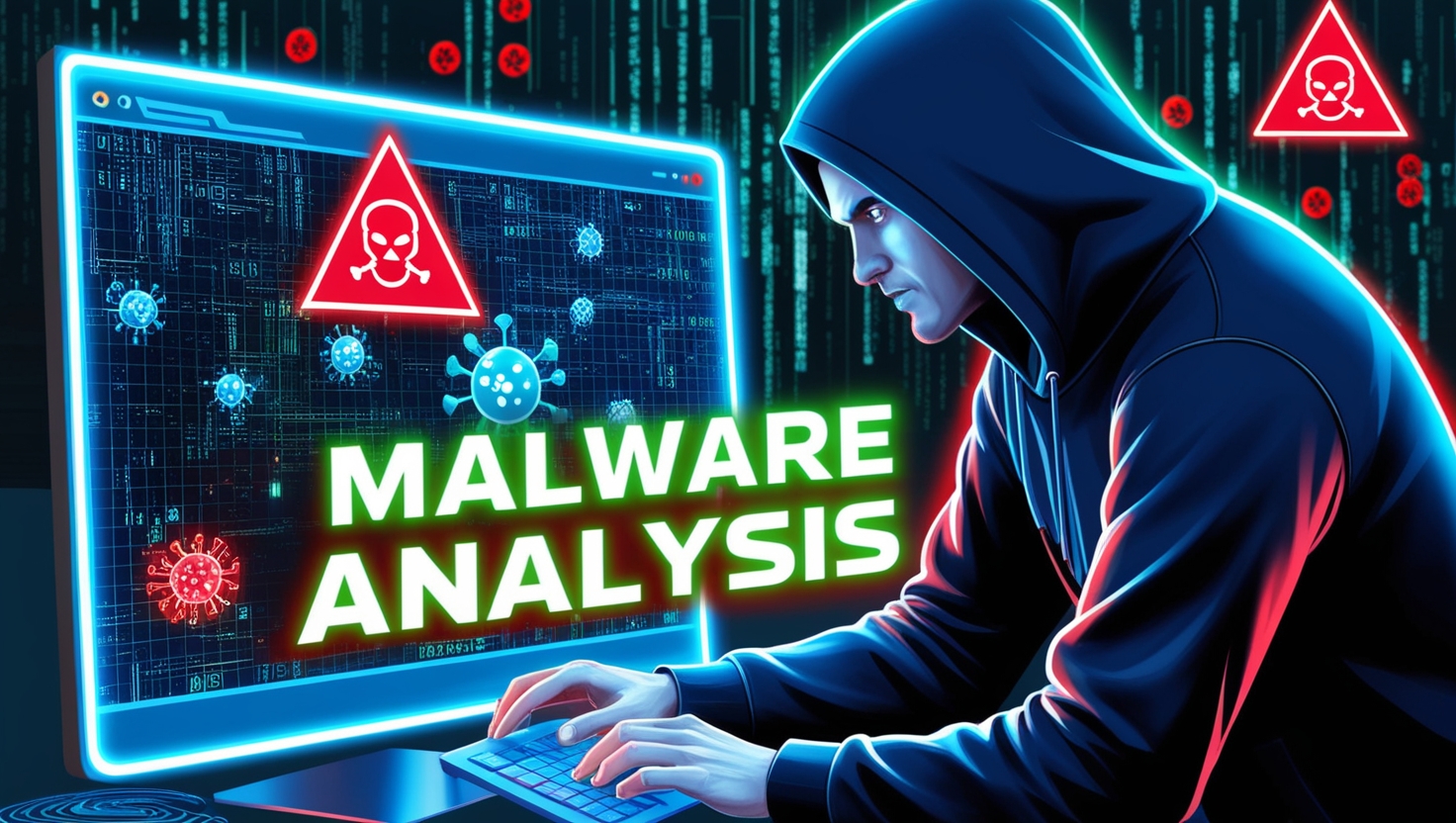1. Introduction to Malware Analysis
Malware Analysis is the process of examining malicious software to understand its functionality, impact, and potential countermeasures. Cybercriminals use malware to exploit vulnerabilities, steal data, and disrupt systems. By analyzing malware, security professionals can develop effective defense mechanisms to protect individuals and organizations.

2. Types of Malware
Understanding different types of malware is crucial for effective Malware Analysis. Some common types include:
- Viruses: Self-replicating programs that attach to files and spread when executed.
- Worms: Standalone programs that spread through networks without user intervention.
- Trojans: Disguised as legitimate software but contain malicious code.
- Ransomware: Encrypts user files and demands ransom for decryption.
- Spyware: Secretly monitors user activity and steals sensitive data.
- Adware: Displays unwanted advertisements, often slowing down devices.
- Rootkits: Hide malicious activities and grant attackers unauthorized access.
3. Goals of Malware Analysis
The primary objectives of Malware Analysis include:
- Identifying Malware Behavior: Understanding how malware interacts with systems.
- Detecting Infection Vectors: Analyzing how malware infiltrates networks and devices.
- Developing Security Measures: Creating antivirus definitions and security patches.
- Improving Threat Intelligence: Enhancing cybersecurity strategies against evolving threats.
4. Approaches to Malware Analysis
Malware Analysis can be conducted using different approaches:
- Static Analysis: Examining the malware file without executing it. This involves inspecting code, metadata, and file structure.
- Dynamic Analysis: Running the malware in a controlled environment (sandbox) to observe its behavior.
- Hybrid Analysis: Combining static and dynamic analysis for comprehensive insights.
- Memory Analysis: Investigating system memory to detect malware traces.
5. Tools for Malware Analysis
Security experts use various tools for Malware Analysis, including:
- IDA Pro: A powerful disassembler and debugger for reverse engineering.
- Ghidra: A free reverse engineering tool developed by the NSA.
- Wireshark: Captures and analyzes network traffic to detect malicious activities.
- Volatility: A memory forensics framework for extracting malware traces.
- Cuckoo Sandbox: An open-source automated malware analysis system.
- YARA: Helps identify and classify malware based on patterns.
6. Malware Analysis Techniques
To effectively analyze malware, cybersecurity professionals use the following techniques:
- Signature-Based Detection: Matching malware against known signatures.
- Behavioral Analysis: Observing real-time activities of malware.
- Reverse Engineering: Decompiling and disassembling malware code.
- Code Injection Detection: Identifying malicious code inserted into processes.
- Entropy Analysis: Detecting obfuscation techniques used by malware.
7. Setting Up a Malware Analysis Lab
A secure Malware Analysis environment is essential to prevent unintended infections. Key steps include:
- Using Virtual Machines: Isolating malware within a virtual environment.
- Configuring Sandboxes: Creating controlled environments for testing malware.
- Network Segmentation: Preventing malware from spreading beyond the test environment.
- Deploying Monitoring Tools: Capturing malware activities for analysis.
8. Common Malware Indicators
Recognizing malware symptoms is crucial for early detection. Common indicators include:
- Unusual System Behavior: Slow performance, frequent crashes, or unexpected reboots.
- High Network Activity: Excessive outbound traffic indicating data exfiltration.
- Unauthorized Access: Suspicious login attempts and privilege escalations.
- File Modifications: Unexpected changes in system files or registry entries.
- New Background Processes: Unknown processes running without user initiation.
9. Real-World Malware Case Studies
Studying past malware attacks helps in understanding their impact and mitigation strategies:
- WannaCry Ransomware (2017): Exploited Windows vulnerabilities to encrypt files globally.
- Stuxnet Worm (2010): Targeted industrial control systems, disrupting nuclear facilities.
- Pegasus Spyware (2021): Used for covert surveillance through mobile device exploitation.
10. Best Practices in Malware Analysis
To ensure effective Malware Analysis, follow these best practices:
- Use Isolated Environments: Prevent malware from escaping into live systems.
- Update Security Tools: Keep analysis tools and antivirus software up to date.
- Document Findings: Maintain detailed reports for future reference.
- Apply Threat Intelligence: Share insights with the cybersecurity community.
- Train Security Teams: Educate professionals on evolving malware threats.
11. Conclusion
Malware Analysis is a critical aspect of cybersecurity, helping organizations detect, prevent, and mitigate cyber threats. By understanding malware behavior, utilizing advanced tools, and following best practices, security experts can enhance defense mechanisms against evolving cyberattacks. Continuous learning and adaptation are essential to stay ahead in the fight against malware.
By following these guidelines, you can effectively analyze malware and strengthen your cybersecurity posture. If you’re interested in learning more, consider exploring advanced malware reverse engineering techniques and threat intelligence strategies.
Check More Blog:- https://thetechcrime.com/cloud-security-threats/
Check My YouTube Chenal:- https://www.youtube.com/@Thetechhacker231

Leave a Reply